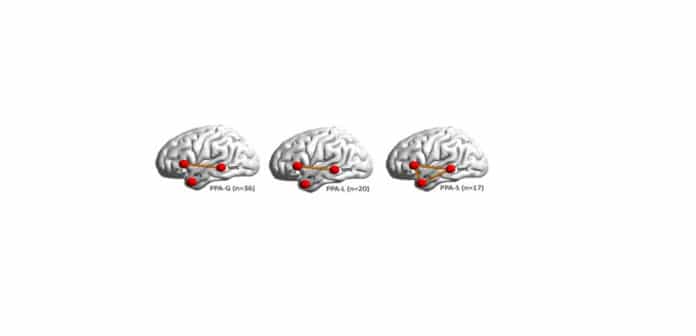In primary progressive aphasia (PPA), patients lose their ability to communicate. It is a form of dementia, in which people find it difficult to express their thoughts and understanding and to find words.
Now, for the first time, scientists at Northwestern University have pinpointed the area of dysfunctional brain networks that lead to impaired sentence creation and word-finding in primary progressive aphasia (PPA). They have also drawn a map that represents three regions in the brain that neglect to converse with each other, restraining an individual’s speech production, word-finding, and word perception.
Communications among three principal regions in the brain are in charge of how people process words and sentences. PPA occurs when the network is absent among these regions.
The map is expected to aid surgeons in pinpointing regions with therapies, including transcranial magnetic stimulation (TMS), to improve an affected person’s speech potentially.
Lead author Dr. Borna Bonakdarpour, assistant professor of neurology at Northwestern University Feinberg School of Medicine’s Cognitive Neurology and Alzheimer Disease Center and a Northwestern Medicine neurologist said, “Now we know where to target people’s brains to attempt to improve their speech.”
In past studies, structural MRI was used to pinpoint brain regions that had atrophied, yet scientists failed to determine how physiological impairment in these regions correlated with symptoms a patient was experiencing.
In this new study, scientists examined brain regions- of 73 patients) recruited from the extensive pool of patients with PPA at Northwestern’s Cognitive Neurology and Alzheimer Disease Center- that were still functional (had not atrophied) and focused on the networks among the functional regions to see if they were connecting or not. Doing so allowed scientists to correlate the functional areas in the brain with symptoms of patients with PPA.
Moreover, using functional MRI, scientists monitored brain activity to pinpoint if brain regions are talking to each other or not.
Bonakdarpour said, “Previous studies of structural changes in the brain were like archeology, in which scientists were locating areas of the brain that had already died. But we are looking at the parts of the brain that are still alive, which makes them much easier to target with treatment.”
The study is published Sept. 1 in the journal Cortex.
